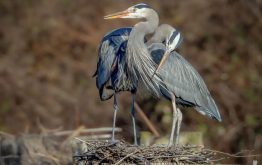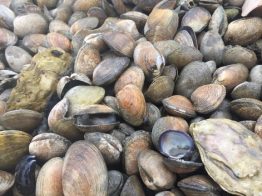A new University of Washington study led by Olivia Sanderfoot reports that many birds were just as likely to be found in highly developed urban areas as they were in less-developed green spaces during the peak of the COVID-19 lockdowns. The paper was published Aug. 11 in the journal Scientific Reports. “Our findings suggest that some birds may have been able to use more spaces in cities because our human footprint was a little lighter,” said Sanderfoot, who completed the study as a doctoral researcher in the UW School of Environmental and Forest Sciences and is now a postdoctoral scholar in the Department of Ecology and Evolutionary Biology at the University of California, Los Angeles.
Read more at UW News »Whodunnit? Uncovering the mystery of a tiny toxin killing shellfish in Puget Sound
Around 50 years ago, Pacific oysters in the Puget Sound started dying at noticeably increasing rates during the summer, causing residents and scientists to wonder why. Researchers in what is now the School of Aquatic and Fishery Sciences investigated many factors that may cause mortalities such as bacteria, reproductive stress related to spawning and changes in other environmental conditions. The evidence collected pointed towards stress on the animals when they spawn, as the Pacific oyster spends a lot of their energy on reproduction.
Read more »New study calculates retreat of glacier edges in Alaska’s Kenai Fjords National Park
As glaciers worldwide retreat due to climate change, managers of national parks need to know what’s on the horizon to prepare for the future. A new study from the University of Washington and the National Park Service measures 38 years of change for glaciers in Kenai Fjords National Park, a stunning jewel about two hours south of Anchorage. The study, published Aug.
Read more at UW News »



